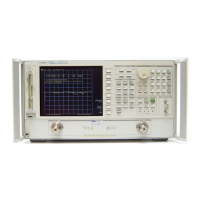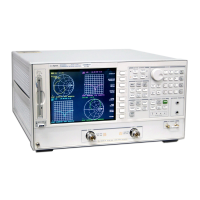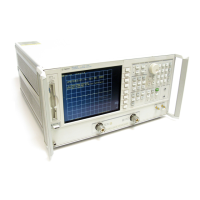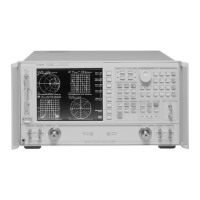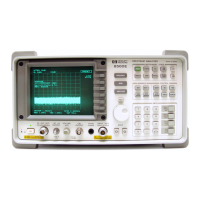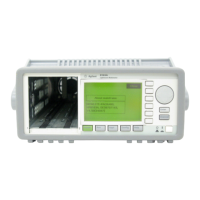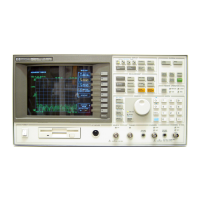Programmer’s Guide 9-11
Introduction to SCPI
Parameter Types
Query Response
When a numeric parameter is queried, the number is returned in one of
the three numeric formats.
NR1 Integers (such as +1, 0, -1, 123, -12345)
NR2 Floating point number with an explicit decimal point
(such as 12.3, +1.234, -0.12345)
NR3 Floating point number in scientific notation (such as
+1.23E+5, +123.4E-3, -456.789E+6)
An example is the response to a query of the stop frequency after
executing the above commands (this response is of the NR3 type).
OUTPUT 716;"SENSE1:FREQUENCY:STOP?"
returns the value 1.3E+9.
Character Parameters
Character parameters (sometimes referred to as discrete parameters)
consist of ASCII characters. They are typically used for program settings
that have a finite number of values.
These parameters use mnemonics to represent each valid setting. They
have a long and a short form which follow the same rules as command
mnemonics.
<char> is used in this document to denote a character parameter.
An example of a command using a character parameter is the command
that selects the format in which the measurement data is displayed:
OUTPUT 716;"CALCULATE1:FORMAT MLOGARITHMIC"
Query Response
When a character parameter is queried the response is always the short
form of the mnemonic that represents the current setting. An example is
the response to a query of the data format after executing the above
command.
OUTPUT 716;"CALCULATE1:FORMAT?"
returns the value MLOG.

